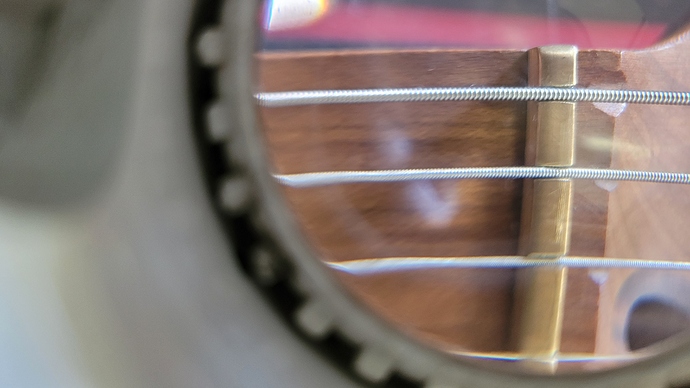I suspect it’s somewhere in between - you CAN do “hit ons from nowhere,” and some people are exceptionally good at this, but I think for most of us a hit-on on an already ringing note (or a pull off from an already ringing note) is going to have a lot more energy and volume to it than one from silence. I’ll also note that the “hit on from nowhere” crowd argue it’s worth doing because it does sound different, and more “legato” - Holdsworth, and I think more recently… blanking on his name, but the SWYBRID guy, pooh-poohs “Petrucci style” legato because it’s not real legato, for this exact reason.
So, my guess is there’s a millisecond between contacting the string and depressing the string enough to fret it, where the finger starts to attenuate/partially mute the note, before that muting effect is abruptly ended by contact with the strings, and in fact is in part reversed by the force of the string striking the fret. And the degree/frequencies impacted by that muting, is probably in part controlled by how hard the surface of the finger striking the string is.
I don’t want to oversell it - it’s a pretty subtle effect, but it’s audible to me, and it’s something I’ve consciously worked on, fretting more with the tips of my fingers than with the fleshier part, to get a clearer attack in legato playing (i know, I know, not legato… haha).
But, given how pronounced the difference in hardness can be as you move along the finger, and how miniscule, relatively speaking and at the pressures we’re talking, the difference between nickel steel and stainless is, I have an awfully hard time believing the harder frets make a guitar brighter, and that jives with maybe a decade of playing experience on guitars with both stainless and nickel steel (and damned near three on nickel steel).
That said, thinking about it a bit more, the best way to test this would probably be to refret a neck with otherwise identical fretwire, but a mix of nickel steel and stainless, and pass it around to a group of guitarists blindfolded and see if they could identify the difference by ear. My money would be on them not being able to do better than luck.

 I believe people over there claim that only “more sensitive ears” can hear the difference - my ears are just fine, though, and I haven’t heard anything materially different between stainless and nickel steel/similar across a couple stainless guitars, in about a decade of playing with stainless frets. And the belief that only certain people can hear the difference while certain others just have this blind spot making them unable to tell makes no logical sense - this isn’t color blindness.
I believe people over there claim that only “more sensitive ears” can hear the difference - my ears are just fine, though, and I haven’t heard anything materially different between stainless and nickel steel/similar across a couple stainless guitars, in about a decade of playing with stainless frets. And the belief that only certain people can hear the difference while certain others just have this blind spot making them unable to tell makes no logical sense - this isn’t color blindness.


 My point was just that tremolo choice might include sound, feel, string spacing, ease of setup and looks as well as tuning stability – leading to different tremolo preferences for each of us.
My point was just that tremolo choice might include sound, feel, string spacing, ease of setup and looks as well as tuning stability – leading to different tremolo preferences for each of us.